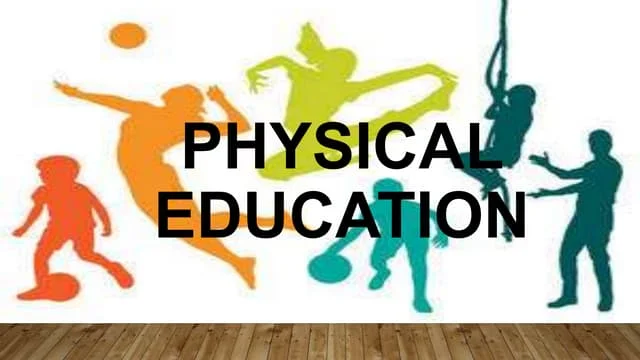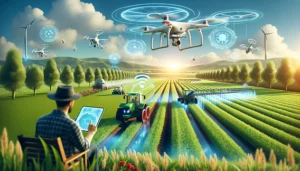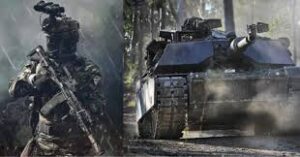The fundamental parts of Physical Education
Physical education, or PE, is a school subject that helps students develop physical fitness and the ability to enjoy and perform physical activities. It also helps students develop motor skills and other skills needed to participate in a variety of activities, such as swimming, basketball, or soccer.
Essential Components of Physical Education
Physical education is a crucial part of the overall education system, ensuring the physical, mental, and social development of students. As defined by SHAPE America, the essential components of physical education are designed to provide students with the knowledge, skills, and attitudes necessary to lead a physically active and healthy lifestyle. These components include a standards-based curriculum, physical literacy, motor skills development, health-related fitness, social and emotional learning, inclusive practices, and effective assessment and evaluation. Incorporating these elements helps create a comprehensive and effective physical education program.
- Definition and Significance
The term “physical education” encompasses more than just physical activity; it includes teaching students how to develop and maintain a healthy lifestyle. Physical education programs aim to instill lifelong habits of physical activity, promote overall wellness, and provide students with the skills needed to participate in various physical activities. The significance of physical education lies in its ability to enhance students’ physical health, improve academic performance, and foster social and emotional growth. In the context of “winter season health tips,” physical education plays a vital role in encouraging students to stay active and healthy during the colder months.
- Key Areas Covered
Physical education programs cover several key areas to ensure a well-rounded approach to student health and fitness. These areas include physical literacy, motor skills development, health-related fitness, and social and emotional learning. Each area addresses different aspects of physical and mental well-being, providing students with the tools they need to lead healthy lives. By focusing on these key areas, physical education programs can effectively promote physical activity, reduce the risk of chronic diseases, and improve overall quality of life. Integrating “winter season health tips” into the curriculum can further enhance students’ understanding of the importance of staying active year-round.
Physical Literacy
- Understanding Physical Literacy
It refers to the ability to move with competence and confidence in a variety of physical activities. Physical literacy involves developing fundamental movement skills, such as running, jumping, throwing, and catching, as well as understanding the principles of physical activity. The goal is to equip students with the knowledge and skills needed to participate in various physical activities throughout their lives. In terms of “winter season health tips,” promoting physical literacy can help students stay active and engaged, even when outdoor activities are limited by cold weather.
- Strategies to Promote Physical Literacy
To promote physical literacy, physical education programs must incorporate a variety of teaching methods and activities. Some effective strategies include providing a diverse range of physical activities, using inclusive and adaptive teaching techniques, and offering opportunities for students to practice and refine their skills. Encouraging regular physical activity outside of school, such as participating in winter sports or following “winter season health tips” for indoor exercise, can also enhance physical literacy. Additionally, fostering a positive and supportive learning environment helps students build confidence and competence in their abilities.
Motor Skills Development
- Importance of Motor Skills in Education
Motor skills are fundamental to a child’s physical development and play a significant role in education. These skills, which include fine and gross motor abilities, are essential for everyday tasks such as writing, cutting, running, and jumping. Developing motor skills from an early age contributes to children’s physical health, coordination, and confidence. In the context of “Physical Education” it’s important to remember that keeping children active even during colder months can help maintain their motor skills. Activities like indoor obstacle courses, dance, and yoga can be excellent ways to ensure children continue to develop these crucial skills year-round.
- Techniques for Teaching Motor Skills
Effective techniques for teaching motor skills involve a combination of structured activities and playful learning. Teachers can use games and sports to engage students in developing their motor abilities. For instance, relay races, ball games, and dance routines can enhance coordination and agility. It’s also important to provide opportunities for practice and repetition to solidify these skills. Integrating “winter season health tips” into your teaching strategies can make a big difference. For example, encourage students to engage in indoor activities like stretching exercises or indoor sports to keep their motor skills sharp even when outdoor play is limited by the weather.

Health-Related Fitness
- Components of Health-Related Fitness
Health-related fitness encompasses several components that contribute to overall well-being: cardiovascular endurance, muscular strength, muscular endurance, flexibility, and body composition. These components are critical in maintaining a healthy lifestyle and preventing chronic diseases. By focusing on health-related fitness in physical education, students can learn the importance of regular physical activity and its benefits. In line with “winter season health tips,” incorporating activities that promote these fitness components indoors during the winter months can help students stay active and healthy. Activities such as circuit training, stretching routines, and indoor aerobic exercises can be beneficial.
- Integrating Fitness into the Curriculum
Integrating health-related fitness into the physical education curriculum involves creating a balanced program that includes various activities targeting all fitness components. Teachers can design lesson plans that incorporate cardiovascular exercises, strength training, flexibility workouts, and body composition activities. Using “winter season health tips,” educators can adapt their lessons to include more indoor activities during colder months, ensuring students remain engaged and active. For example, indoor aerobics, strength training with resistance bands, and yoga can be excellent additions to the curriculum during winter, promoting overall fitness while staying warm and safe indoors.
Social and Emotional Learning (SEL)
- Role of SEL in Physical Education
Social and emotional learning (SEL) plays a crucial role in physical education, helping students develop essential life skills such as teamwork, communication, empathy, and self-regulation. SEL fosters a positive learning environment where students feel supported and motivated to participate. Integrating SEL into physical education promotes not only physical health but also mental and emotional well-being. As part of “winter season health tips,” encouraging activities that build social and emotional skills can enhance students’ overall health. For example, team-building exercises, cooperative games, and mindfulness practices can be incorporated into PE lessons to support SEL.
- Activities to Enhance SEL
To enhance SEL in physical education, teachers can incorporate a variety of activities that promote social interaction and emotional growth. Cooperative games, group challenges, and peer-led activities encourage students to work together and develop interpersonal skills. Additionally, incorporating “winter season health tips,” activities like indoor group yoga or mindfulness sessions can help students manage stress and build emotional resilience during the winter months. These activities not only support physical health but also create a positive and inclusive classroom environment, contributing to the overall development of each student.
Inclusive Practices
- Ensuring Inclusivity in Physical Education
Ensuring inclusivity in physical education means creating a learning environment where all students, regardless of their abilities or backgrounds, feel valued and supported. This involves adapting activities to meet the diverse needs of students and providing equal opportunities for participation. Teachers can use a variety of strategies to promote inclusivity, such as modifying games, using adaptive equipment, and providing individualized support. As part of “winter season health tips,” it’s important to ensure that all students can engage in physical activities, even during the colder months. Inclusive indoor activities can keep all students active and involved, regardless of the weather.
- Adapting Activities for Diverse Needs
Adapting activities for diverse needs in physical education involves understanding and addressing the unique requirements of each student. This might include modifying the rules of a game, using different types of equipment, or providing additional assistance. Teachers should strive to create a supportive and flexible learning environment where all students can succeed. Incorporating “winter season health tips” into this approach can help ensure that all students remain active and healthy during the winter. For example, indoor activities like modified yoga, gentle stretching exercises, and inclusive dance routines can be tailored to meet the needs of all students.
Assessment and Evaluation
- Methods of Assessing Physical Education
Assessing physical education involves evaluating students’ progress in various aspects of physical fitness, motor skills, and overall participation. Teachers can use a combination of formative and summative assessments, including observations, skill tests, fitness assessments, and self-evaluations. These assessments help track students’ development and identify areas for improvement. Using “winter season health tips,” teachers can adapt their assessment methods to ensure students remain active and engaged during the winter. For example, indoor fitness tests, skill challenges, and self-reflection activities can be used to assess students’ progress while keeping them motivated and active.
- Tools and Techniques for Effective Evaluation
Effective evaluation in physical education requires a variety of tools and techniques to measure students’ performance accurately. Teachers can use fitness trackers, skill rubrics, peer assessments, and digital portfolios to gather comprehensive data on students’ progress. Incorporating “winter season health tips,” it’s important to evaluate students’ ability to stay active and healthy during the winter months. Indoor fitness challenges, skill demonstrations, and wellness journals can provide valuable insights into students’ overall well-being and help teachers tailor their instruction to meet students’ needs.
Teacher Professional Development
- Importance of Ongoing Training
Ongoing professional development is essential for physical education teachers to stay current with best practices, new research, and innovative teaching methods. Continuous training helps teachers enhance their skills, expand their knowledge, and improve their ability to meet students’ diverse needs. Incorporating “winter season health tips” into professional development can equip teachers with strategies to keep students active and healthy year-round. Attending workshops, conferences, and online courses focused on winter-specific activities and health tips can provide valuable resources for teachers to use in their classrooms.
- Resources for Professional Development
There are numerous resources available for physical education teachers to pursue professional development. SHAPE America offers a variety of workshops, webinars, and certification programs that provide valuable insights and practical strategies for improving physical education programs. Additionally, online platforms, professional journals, and educational conferences can offer up-to-date information and networking opportunities. By focusing on “winter season health tips,” teachers can find specific resources that address the challenges of keeping students active and healthy during the colder months. Utilizing these resources can help teachers create engaging and effective physical education programs that promote lifelong health and fitness.
Actual training is a scholastic subject and fills in as the groundwork of a CSPAP and, thus, requests similar schooling meticulousness as other center subjects. Actual schooling furnishes understudies with an arranged, successive, K-12 principles based program of educational plans and guidance intended to foster coordinated movements, information and ways of behaving for dynamic living, actual wellness, sportsmanship, self-viability and the capacity to understand individuals at their core.
During actual training, understudies practice the information and abilities they acquire through active work, which is characterized as any substantial development that outcomes in energy consumption. Understudies likewise participate in practice — any actual work that is arranged, organized and dreary — to improve or keep at least one part of wellness (CDC, 2013, p. 8).
Actual training fosters the truly educated person through a conscious act of very much planned acquiring errands that consider expertise obtaining in an educational environment zeroed in on dominance (SHAPE America, 2014, p. 10).
Actual training tends to the three areas of learning: mental or mental abilities connected with the information on development; emotional, which tends to development in sentiments or perspectives; and psychomotor, which connects with the manual or actual abilities connected with development education (SHAPE America, 2014, p. 4).
A very much planned actual instruction program:
- Addresses the issues, everything being equal;
- Saves understudies dynamic for the majority of actual instruction class time;
- Shows self-administration;
- Underscores information and abilities for a long period of actual work; and
Is an agreeable encounter for all understudies (CDC, 2013, p. 12).
SHAPE America- – Society of Wellbeing and Actual Instructors is the expert enrollment affiliation that fills in as the public voice for 200,000+ wellbeing and actual teachers around the country. SHAPE America sets the public guidelines for K-12 actual instruction and the grade-level results for K-12 actual training.
Conclusion
- Recap of Essential Components
Physical education is a cornerstone of a well-rounded education, fostering not only physical health but also emotional and social development. SHAPE America has defined the essential components of physical education, emphasizing the importance of a comprehensive approach. These components include a standards-based curriculum, which ensures that students achieve specific learning outcomes in physical education. Physical literacy, which focuses on the development of motor skills and confidence, is crucial for lifelong engagement in physical activity. Health-related fitness addresses the critical aspects of cardiovascular endurance, muscular strength, and flexibility, promoting overall wellness. Social and emotional learning (SEL) integrates skills such as teamwork, empathy, and self-regulation into physical education, enhancing students’ overall development. Inclusive practices ensure that all students, regardless of their abilities, can participate and benefit from physical education. Lastly, effective assessment and evaluation help teachers track student progress and tailor instruction to meet individual needs. These components collectively create a robust physical education program that supports students’ physical, mental, and emotional well-being.
- Future Directions in Physical Education
Looking ahead, the future of physical education lies in further integrating technology and innovative teaching methods to engage students in meaningful ways. Virtual reality (VR) and augmented reality (AR) can create immersive learning experiences, making physical activities more interactive and exciting. Additionally, there is a growing emphasis on personalized learning, where physical education programs are tailored to meet the unique needs and interests of each student. This approach not only fosters a deeper connection to physical activity but also helps students develop a lifelong love for staying active.
Incorporating mental health education into physical education is another emerging trend. Recognizing the strong link between physical activity and mental well-being, schools are increasingly focusing on activities that promote mindfulness, stress reduction, and emotional resilience. By addressing mental health within the context of physical education, educators can support the holistic development of students.














Post Comment